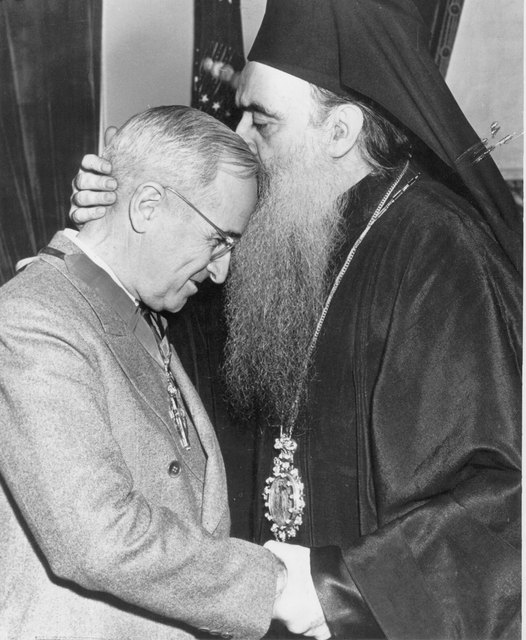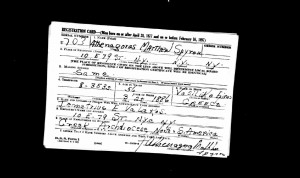Archbishop Athenagoras Spyrou led the Greek Archdiocese of North and South America from 1930 until 1948. That year, he was elected Ecumenical Patriarch, a position he held for nearly a quarter century, until his death in 1972. Athenagoras is perhaps most famous (or, in some quarters, infamous) for his landmark 1964 meeting in Jerusalem with the Roman Catholic Pope Paul VI.
His admirers view him as a charismatic, visionary leader of global Orthodoxy — perhaps even a saint. His detractors view him as an ecumenist Freemason who compromised the faith. But whatever you think of him, Athenagoras was a giant of Orthodoxy in the 20th century, one of the defining figures of his time. Here are some random facts about him:
He wanted to be Ecumenical Patriarch when he was still in seminary. According to one biographer, as a young seminary student, Athenagoras focused his attention on becoming Ecumenical Patriarch, “a dream common to all celibate clergymen. This goal was made evident later on in his activities as Archbishop of North and South America.”
His mentor was Meletios Metaxakis. Metropolitan of Athens (and later Ecumenical Patriarch) Meletios Metaxakis was an equally significant, and equally controversial, figure. It was, of course, Metaxakis who established the Greek Archdiocese, spread the idea that the Ecumenical Patriarch has jurisdiction over all “barbarian lands” under Canon 28 of Chalcedon, spearheaded the introduction of the New Calendar, etc. Athenagoras was more politically savvy than Metaxakis, which is what helped him to survive much, much longer as Ecumenical Patriarch.
He introduced organ music on Corfu. Before coming to America, Athenagoras was the Metropolitan of Corfu (home of the relics of St. Spyridon). There, he introduced the use of an organ, which was widely opposed by the rest of the Holy Synod of Greece. Athenagoras ignored them, and (according to at least one source) Corfu remains the only church in Greece to use an organ. In America, Athenagoras was a strong proponent of organ music.
He tried to join the U.S. Army. On December 8, 1941 — the day after the Japanese attack on Pearl Harbor — Athenagoras, then the 56-year-old Greek Archbishop of North and South America, attempted to enlist in the U.S. Army. They turned him down.
He gave President Truman part of the True Cross. In 1947, Athenagoras presented his friend, President Harry Truman, with a piece of the True Cross. The next day, newspapers published a rather famous photo of Athenagoras kissing Truman on the forehead.
He flew to Constantinople on Truman’s plane, the Sacred Cow. In 1948, Athenagoras was elected Ecumenical Patriarch. President Truman let Athenagoras borrow his presidential plane to fly from America to Constantinople. The term “Air Force One” wasn’t in use yet; the plane was called the “Sacred Cow.” (Yes. The Sacred Cow.) [UPDATE: It turns out that Athenagoras did not travel to Istanbul aboard the Presidential plane. That possibility was discussed, but ultimately it was decided that Athenagoras would travel aboard a U.S. military plane provided by Truman. The story about Truman’s plane was picked up by a lot of sources and repeated to the point that many, including me, took this story for granted. But it’s not accurate.]


Is it true he was a Free Mason? Is it also true that his predecessor was forced out of office by the U.S. government?
Dear Matthew: Hope all is well. Hope you remember me. I ran across this piece recently. I am putting together a book on Archbishop Athenagoras. Yes, there is confusion. It seems that Truman’s presidential plane at this time was The Independence, The Sacred Cow, the plane used by FDC and Truman until 1947, was still in government service [until 1961] but was not the “presidential plane” in January 1949. I think Athenagoras did traveled on the Sacred Cow, however, to Parish and Istanbul. Take care. Keep up the good work!